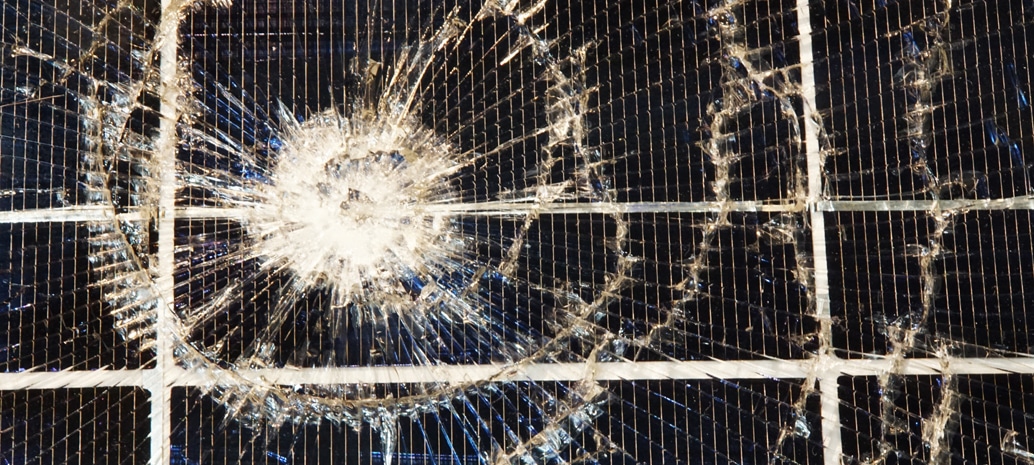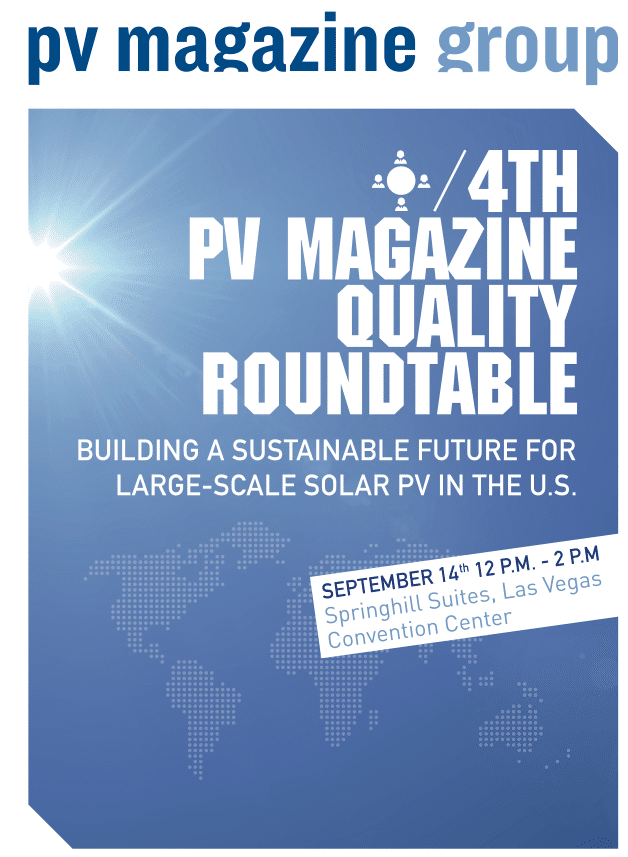When Christopher Barton * heard the concerns of his client, he could hardly believe it. In just a few months he and his company had installed many tens of megawatts of modules on behalf of an EPC. He says that he is both experienced and knows the correct and proper way to install solar modules. (* name changed)
The absurdity of the concern was reflected in the subsequent discussion. The EPC had not tested a single module prior to installation. Now the EPC is telling the installer that spot checks using electroluminescence have shown that more than 40% of the modules are damaged. This figure includes all visible damage without regard to the number and location of cracks. There is also reduced yield, but the extent of it is not yet known yet. “It is not clear where in the value chain this happened,” says Barton. It may be that the modules were manufactured with defects; they may have been damaged in transport, and it is also possible that they developed microcracks during installation or afterwards, during operation.
Interested in discussing the question raised?
Come to our roundtable at SPI in Las Vegas, 12 p.m. to 2 p.m. on September 14.
-> More information
If you have examples of poor quality modules or installations and interesting discussion points – pv magazine would be interested in your story and will treat all submissions with the utmost confidentiality.
-> More information
To register for free, email us at:
-> roundtable@pv-magazine.com
From a legal standpoint, he believes that the case is clear. If it cannot be proven who is responsible for the damage, the EPC is liable to the investor. The multi-million dollar lawsuit is still in progress, and the outcome is uncertain. Because it is an ongoing case, pv magazine cannot yet contact the EPC to get its side of the story.
Topics to be discussed
This case makes a few things clear and, at the same time, illustrates themes that will be discussed at the pv magazine Quality Roundtable at SPI.
- If an EPC does not perform receiving inspections, it risks not being able to demonstrate responsibilities. According to Barton, this is currently more the rule than the exception. Why is this happening?
- Even if an EPC performs receiving inspections, Barton says that liability depends on how the EPC purchased the modules and where the transfer of risk occurs, at the factory or at the construction site.
- Established module manufacturers generally test modules before they are packed to demonstrate quality. However, it is not clear that that is sufficient for modules purchased at the production facility. After all, damage can also occur during packaging. Who is liable in this case?
- When damage is found later, who’s to say that the cause of the damage didn’t occur at an early stage? How is it possible to determine whether damage is a delayed consequence of a production or material fault, and when that happens, who is liable?
- On the technical level, we have to ask what kinds of damage revealed by electroluminescence images are critical and which can be considered acceptable for the investor. One might take the position that no modules should be allowed to have any kind of visible damage. But that is not necessarily the most economical solution.
- On the structural level, we have to ask how to reduce the cost pressures on the parties involved, leading them to skip receiving inspections. This is closely tied to the time pressure that projects are subject to. How can the industry ensure that everyone involved can live with the solution?
How would you answer these questions? Please share your thoughts with pv magazine at roundtable@pv-magazine.com
Building a Sustainable Future for Large-Scale Solar PV in the U.S.
- 12 p.m. to 2 p.m. on September 14, 2016 during SPI in Las Vegas
- Springhill Suites at Las Vegas Convention Center
- Register at no cost at: roundtable( at )pv-magazine.com
- Target audience: Asset managers, EPCs, operations & maintenance suppliers (O&M), system designers and independent engineers, financial institutions, insurance companies, investors, system owners (utilities, gencos, IPPs, as well as C & I system owners), certification and testing bodies, research institutes and universities, industry associations, government entities, codes & standards and regulatory agencies.
- MCs: pv magazine
- More information
| Initiative sponsor partner: | Gold sponsor: | Gold sponsor: |
 |  | |
| Supported by: | Supported by: | |
 |
This content is protected by copyright and may not be reused. If you want to cooperate with us and would like to reuse some of our content, please contact: editors@pv-magazine.com.



It would be helpful to know what manufacturer of modules are at this installation and although no modules were tested in the field, performing electroluminescence tests in the field requires sophisticated equipment and training, which is not done by an installer. Electroluminescence tests are done several times during the manufacturing process of the modules, so that data should exist for the modules in question.
• Mistaken Trust/ Confidence
An inescapable fact is that the competent investigation of every harmful event reveals that the causation of the harm includes the mistaken/ naïve/ unwarranted/ gullible/ imprudent trust and confidence in one or more erroneous/ untrustworthy theories, assumptions, standards, devices , procedures, processes, programs, people, institutions , agencies, contractors , and/or conditions. The functional alternatives include monitoring, curiosity, skepticism, and the “questioning attitude.”
Quotation: “You get what you inspect; not what you expect.”-An old U.S. Navy proverb
Quotation: “Trust, but verify.”-Quoted by President Ronald Reagan
Quotation: “A sucker is born every day.”-Attributed to P. T. Barnum
Quotation: “The world abounds in unrocked boats with holes just above the current waterline.”-Salty Wisdom
Quotation: “Faith is believing for sure what ain’t so.”-Mark Twain
Observation: Hubris is the mistaken belief that one’s personal success resulted from one’s personal attributes rather than the attributes of the situation. It relates to the Fundamental Attribution Error applied to the self.
Observation: The causation of the embarrassing and costly link-up between Walgreen and Theranos includes Walgreen’s unwarranted trust in Theranos without proper due diligence vetting .
Quotation: “If you don’t take time for vetting, be sure to save time for regretting.”
Observation: The causation of the 2008 Financial Crisis involved, in part, the mistaken trust in the ratings of bond rating agencies even though they were known to have obvious conflicts of interest.
Observation: The Open Phase Condition episode is proof positive that NRC trust in its own review processes has been excessive.
Observation: The Kleen Energy Plant Explosion indicated an unwarranted trust in the usual business practices of the general contractor.
Observation: Honda continues to suffer from prior excessive trust in its air bag supplier, Takata .
Observation: Despite evidence to the contrary, trust is still a popular sellable commodity .
Observation: Part of accountability is to determine the extent to which the trusted is trustworthy.
Observation: Previously trusted inferences from forensic evidence are being called into question and revealed as untrustworthy .
Observation: The death of Joshua Brown while driving his Tesla Model S in the autopilot mode raises questions as to the adequacy of the safe operating envelope (SOE) recommended by the manufacturer and as to Mr. Brown’s adherence to the safe operating envelope . Apparently, Mr. Brown had excessive trust in the autopilot, perhaps from extensive experience that did not include a situation like his final one.
Observation: The owners of the excursion boat Ethan Allen foolishly trusted in the stability of the vessel after modifying it . The Safe Operating Envelope (SOE) of the modified vessel was more restrictive than that of the vessel before modification. Twenty passengers died as a result.
Observation: Gullibly trusting nonconforming individuals and organizations are vulnerable to sting operations, spiking operations, and entrapments. (Sting operations and spiking operations are generally legal and ethical, but entrapments are not.)
Observation: Every professional should be mindfully wary of the possibility that the next observable actionable condition, behavior, action, or inaction may be part of a sting operation, a spiking operation, and/or an entrapment? Tempting bait includes opportunities for saving time, for saving money, for saving effort, for saving embarrassment, for keeping the operation on line, for making one’s numbers, for staying off the regulatory radar, and the like.
Observation: The causation of the 2016 Westinghouse Fuel Plant Partial Shutdown included excessive and unwarranted trust in the measures to identify the uranium build-ups. This points to an infraction of 10CFR50, Appendix B, Criterion XVI on the prompt identification of adverse conditions.